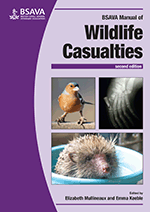
Full text loading...

The Eurasian otter is the only otter native to the British Isles. Two other species, the Asian small-clawed otter and the American river otter are commonly kept in captivity and occasionally escape. The majority of otter casualties are victims of road traffic accidents; bite wounds and abandoned or orphaned cubs are also commonly seen. This chapter covers: ecology and biology; anatomy and physiology; capture, handling and transportation; clinical assessment; first aid and hospitalization; anaesthesia and analgesia; specific conditions; therapeutics; husbandry; rearing of otter cubs; rehabilitation and release; and legal considerations.
Otters, Page 1 of 1
< Previous page | Next page > /docserver/preview/fulltext/10.22233/9781910443316/9781910443316.18-1.gif

Full text loading...











